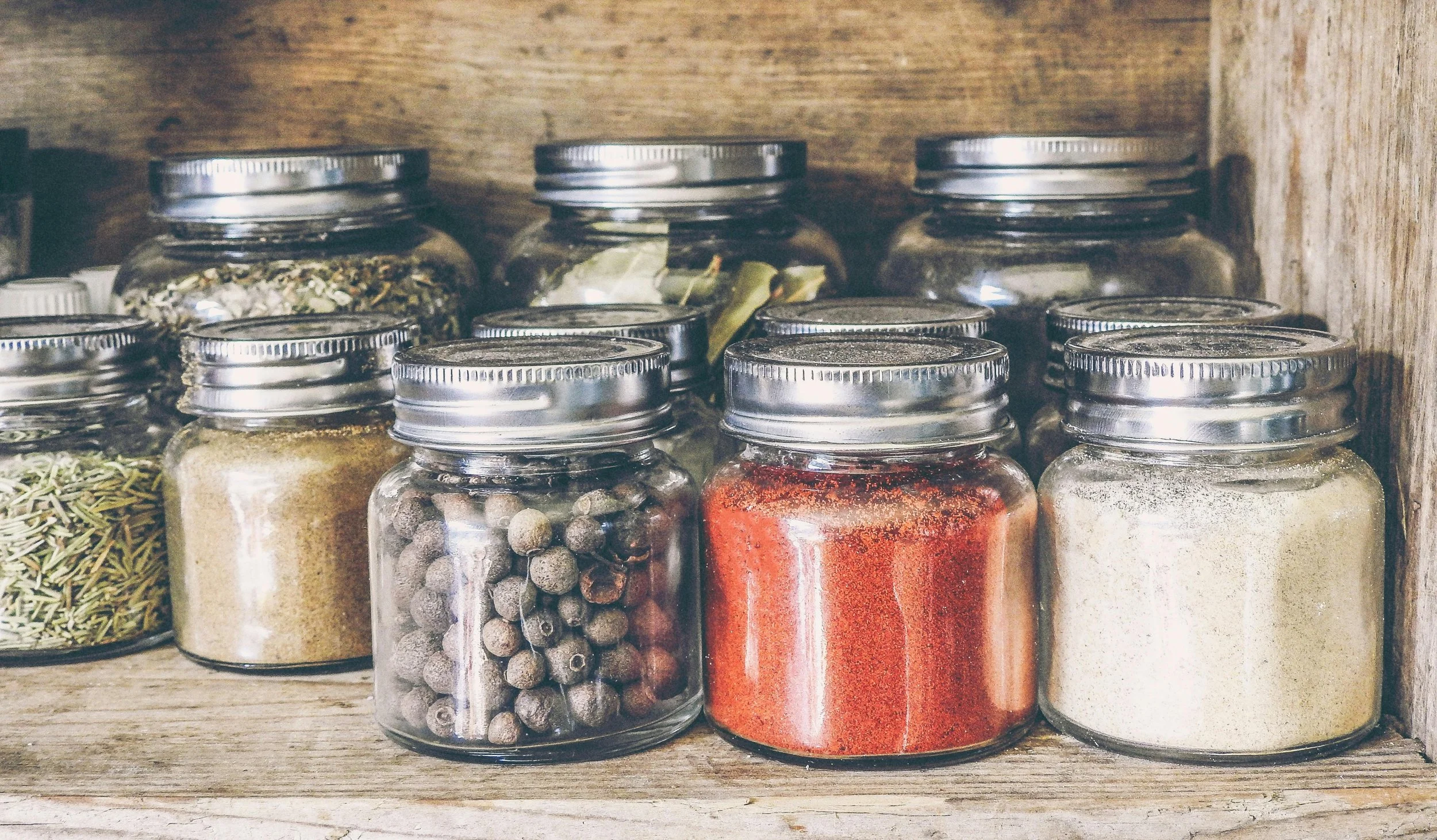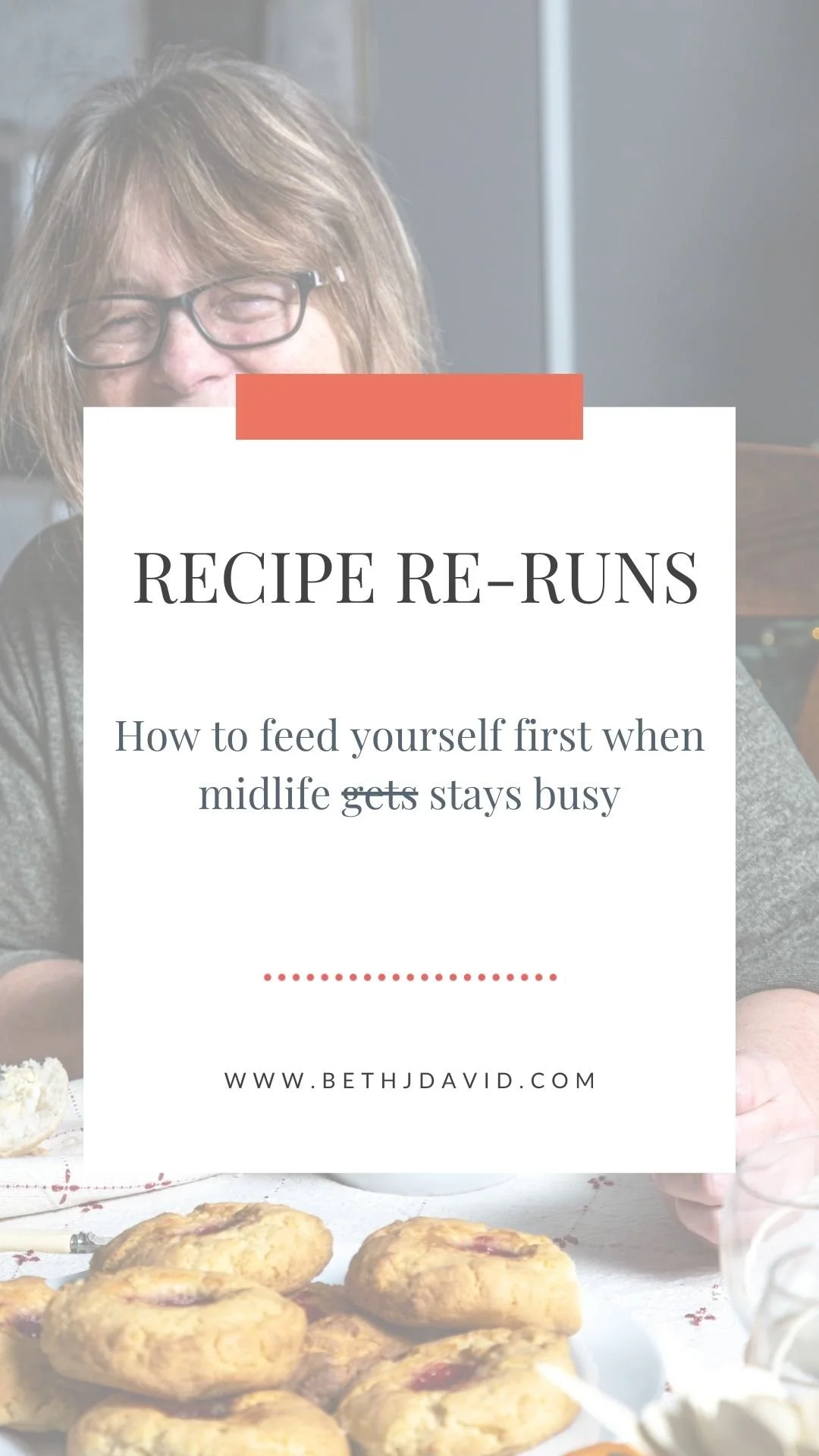How to add spice to your midlife meals: your guide to flavours with benfits
More cooking at home may be the goal, but it’s a challenge when you're uninspired by your fridge.
Cooking the same meals on repeat, changing taste preferences, limited time and energy, all make it hard to feel motivated by the contents of your kitchen cupboards, especially if you've been relying on last year’s produce to round out your meals.
And a trip to the grocery store doesn’t provide much inspiration because the foods in the aisles don’t look any different from what you’ve been buying all season.
Even old favourites have lost their appeal; so how do we relight our culinary spark?
It all starts with your taste buds
There are many areas to be (newly) focused on as we transition through menopause and beyond, including maintaining our independence and protecting our brain health.
Staying strong and mobile is at the top of the list for many of the women I speak to.
But our muscle and bone health aren’t the only things we need to protect as we age.
Did you know that your taste buds diminish over time?
We’re born with around 10,000 taste buds, but the total number (and their size) decreases as we age. You’re likely down to about 5000 taste buds by the time you reach midlife.
Other factors, including some medications, viral infections, Alzheimer’s disease, smoking and vitamin or mineral deficiencies can further dull our sense of taste. On top of that, our sense of smell decreases as we age, only adding to our declining sense of taste.
If your food isn’t tasting like it used to, you’re not imagining it!
FOCUSING ON FLAVOURS THAT SUPPORT MIDLIFE HEALTH
The quick solution to the taste dilemma might look like adding extra salt, or maybe something sweet, to amp up the flavour for your tired taste buds. You might not even realize you’ve begun adding more as you prepare and season your food!
But added salt isn’t an ideal solution, especially in midlife.
Excess salt consumption can contribute to heart disease, high blood pressure and stroke and can also have a negative impact on our bone and brain health.
Luckily there are other ways to wake up your tastebuds so you stay interested in, and more importantly feel satisfied with, the foods you’re eating.
Using fresh herbs and spices
Including fresh herbs and spices in your cooking is the secret sauce for giving your meals a new twist, without re-inventing recipes.
They're a simple way for you to add flavour plus a delicious boost to your health in midlife.
Spices: Your Flavourful Allies
Spices, herbs* and aromatics like garlic and onion, not only enhance the flavour of our foods, they have benefits for our health in midlife. Many contain antioxidants and anti-inflammatory compounds that can help to support our heart, brain and bone health in midlife.
*Some herbs, like turmeric for example, can be contraindicated for certain health conditions and may have adverse interactions with existing medications.
When choosing supplements always consult with your healthcare provider first. Inclcuding herbs and spices as fresh ingredients is always the most delicious option.
Spices with benefits:
Cinnamon: Not only for baking, cinnamon adds the taste of sweetness to many foods, including oatmeal, fruits and in smoothies.
Regulates blood sugar
Rich in antioxidants
Anti-inflammatory properties (may be helpful with joint pain, gut health)
Supports liver health and bone density
Improves risk factors for cardiovascular health, including blood pressure and cholesterol
Cumin: A savoury spice with a warm, earthy flavour, used in Middle-Eastern, North African and Mexican cooking. Use in soups, dry rubs and marinades, seasoning vegetables, bbq sauces and dips like hummus.
Aids digestion
Controls blood sugar
Source of antioxidants and iron
May help manage cholesterol levels
Cardamom: From the ginger family, cardamom has both sweet and savoury flavours. Used in Middle-eastern and Indian cuisines.
Supports digestion
Promotes bone health
Antioxidant properties
May aid in blood pressure regulation
Ginger: This pungent spice can easily be used fresh (root) or dried (ground). Use in dips, smoothies, sauces, soups, marinades and baking.
Enhances digestion
Strong anti-inflammatory properties
Improves heart health and diabetes management
Supports brain health
Turmeric*: A peppery spice found in Indian, Thai and Asian dishes. Also used as part of many spice blends like curry. Widely available as a powder but can also be found fresh, as a root.
*consume with black pepper to improve absorption
Anti-inflammatory benefits
Supports joint health
Regulates blood sugar
Promotes heart and brain health
Garlic and Onions: Both belong to the lily family, along with shallots and leeks. Garlic can be used either fresh or ground, but fresh garlic has the most robust flavour and health benefits.
Garlic: Supports brain health, bone health, and cardiovascular health (can help to manage blood pressure and cholesterol levels)
Onions: Promote bone health, digestive health, and heart health
BONUS: 8 Simple ways to incorporate fresh herbs every day:
Add chopped herbs to salad dressings
Make side dishes that are primarily herbs, eg tabbouleh
Mix fresh herbs into cold salads like potato or this simple herb & pasta dinner salad
Add to chilis, stews and soups as a garnish on top
Topping for roasted vegetables
Use fresh herb sauces on pasta or on top of cooked meat (pesto, chimichurri, mint sauce)
Use in sandwiches or wraps instead of lettuce
Add fresh herbs to smoothies
Looking for more culinary tips and delicious recipes to help you navigate midlife without diets or restrictions? Join my newsletter here!
If you’re tired of worrying that you’re not doing food “right” and are hungry for a simpler approach to your plate, let’s connect for a free 30 minute chat and figure out what’s best for you.








